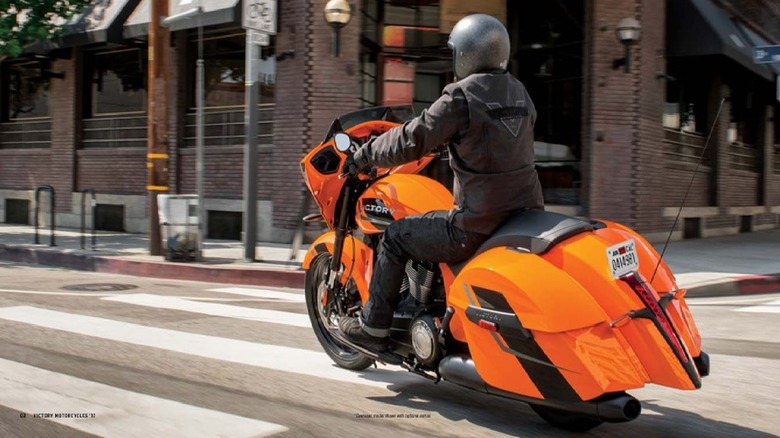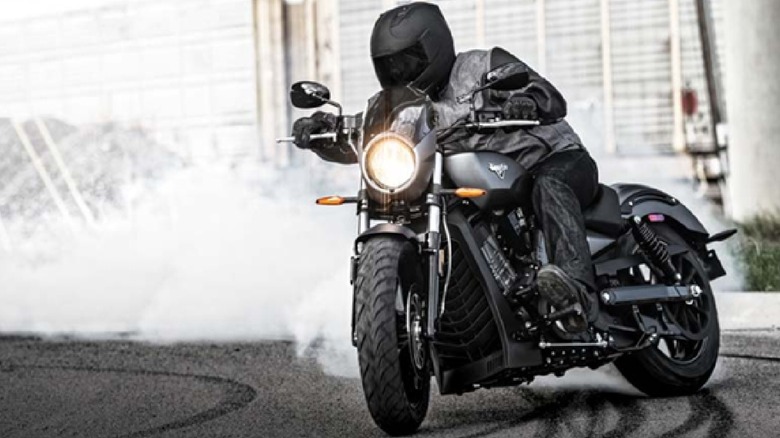What Happened To Victory Motorcycles And Who Made Them?
The first Victory motorcycle appeared on the market in 1998 with the launch of the company's V92C Cruiser. As the name suggests, the Victory V92C featured a 92-cubic-inch (1,507cc) V-twin engine making it another non-Harley motorcycle powered by a V-twin engine.
Over the next 18 years, Victory would produce almost 60 different V-twin motorcycle models. For the 2017 model year alone, Victory models included powerful cruisers like Octane, Hammer S, Gunner, and Vegas. The Victory Magnum bagger and Cross-Country Tour models featured motorcycles with long range comfort and enough cargo capacity to hold enough clothes for a few days. In addition, the Victory High-Ball offered a no-frills theme with 12-inch-high (305mm) ape-hanger bars.
Polaris, Victory Motorcycles' parent company, announced that 2017 would be Victory's final year on January 9, 2017. The announcement, shared by Polaris Investor Relations, cites Victory's low market share and limited profitability as reasons for the business closure.
Production continued for Indian Motorcycles, another major motorcycle brand owned by Polaris, and the Polaris Slingshot three-wheeled motorcycle. In addition, Polaris vowed to provide Victory motorcycle replacement parts until 2027.
What was special about Victory Motorcycles?
The Victory Vegas is one of a few discontinued motorcycles that deserve a modern remake. The Vegas model debuted in 2003 with a 1,508cc air-cooled V-twin and a five-speed manual gearbox. The drivetrain saw upgrades in 2006 and again in 2011, its final iteration being a 50-degree air-cooled V-twin dubbed the Freedom 106 backed by a six-speed gearbox that would carry on in the Vegas and other Victory models until the end.
Cycle World praised the Victory Vegas for its "linear power delivery" and predictable handling." In addition, MSRP for the Vegas remained competitive, actually falling from $14,999 in 2003 to $13,999 for the 2017 model year.
Another model with special significance is the Harley-Davidson V-Rod alternative, Victory Octane. In 2017, its final model year, the Victory Octane boasted a dual overhead cam 1,200cc liquid-cooled 60-degree V-twin with 103 horsepower, the most of any Victory model, and 73 lb-ft of torque. The 2017 Victory Octane's lightweight aluminum frame helped keep the under 560 pounds, and its agility allowed lean-angles up to a 32-degrees when cornering.

